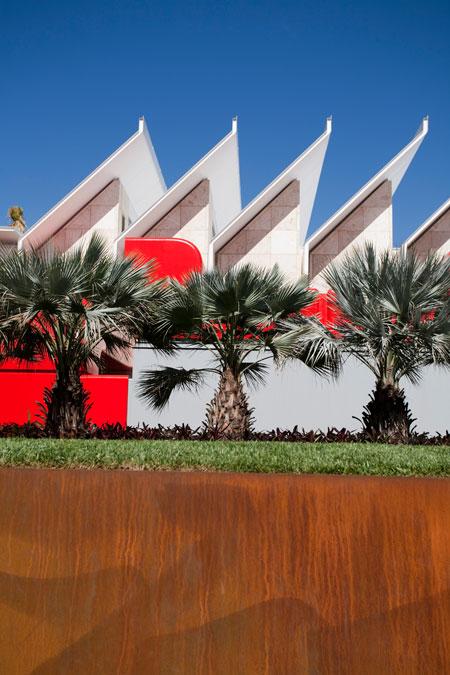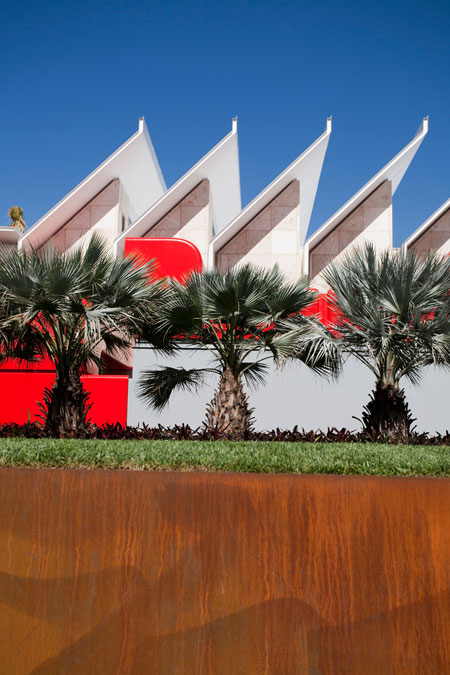Now that the fence surrounding the new Resnick Pavilion is down, visitors can appreciate a varied collection of palm trees installed in orderly grids, many in cor-ten containers set into the ground. They are the work of artist Robert Irwin. Since 1970, Irwin has been exploring perception with indoor and outdoor installations that push the boundaries of art and artistic practice. His palm garden at LACMA is an evolving installation.
I interviewed Bob when the installation surrounding Resnick was still in a conceptual stage. He talked about the sensory experience of the palm installation. “What I wanted to do is to make a garden that represents this particular place in time,” he said. “Art is a perfect representation of a moment in time, a set of values that define a particular culture and moment.”
“The site itself is very unique—the La Brea Tar Pits, this primordial ooze that is coughing up bones of saber-toothed cats and mammoths. So you take that as a place to begin, and marry that with this primordial kind of tree. Certain types of palm, cycads, like the ones in front of BCAM, are actually the first plants on earth, as far as anybody knows.” Irwin also noted the status of the palm as an icon of Southern California, making it a logical place to create what he calls “an important collection of these primordial plants.”
Irwin described the difference between studio practice and an artistic project on this scale, which must take into account certain logistical challenges, such as the fact that the garden sits atop an underground parking garage. “The beauty of being a studio artist is that you can make the world look any way you want, as long as you don’t expect anybody else to agree with you. But when you actually start to work in the world, you have to accept that your work is going to be affected by all kinds of conditions, issues, and restrictions. It’s much more complicated.” The unique environmental requirements of each type of palm also played into the project, and Irwin worked with landscape architect Paul Comstock to address those considerations and ensure the health and longevity of the palms.
Bob urges visitors to experience the palms without trying to know too much about them in advance. “One of the key things about seeing is attending,” he says. “You can’t see without employing your body as part of the process. The more you put in preconditions or quantitative rationales, the less you’re going to see; the more you want to know dates and origins and so on, the less you’re going to know.”




